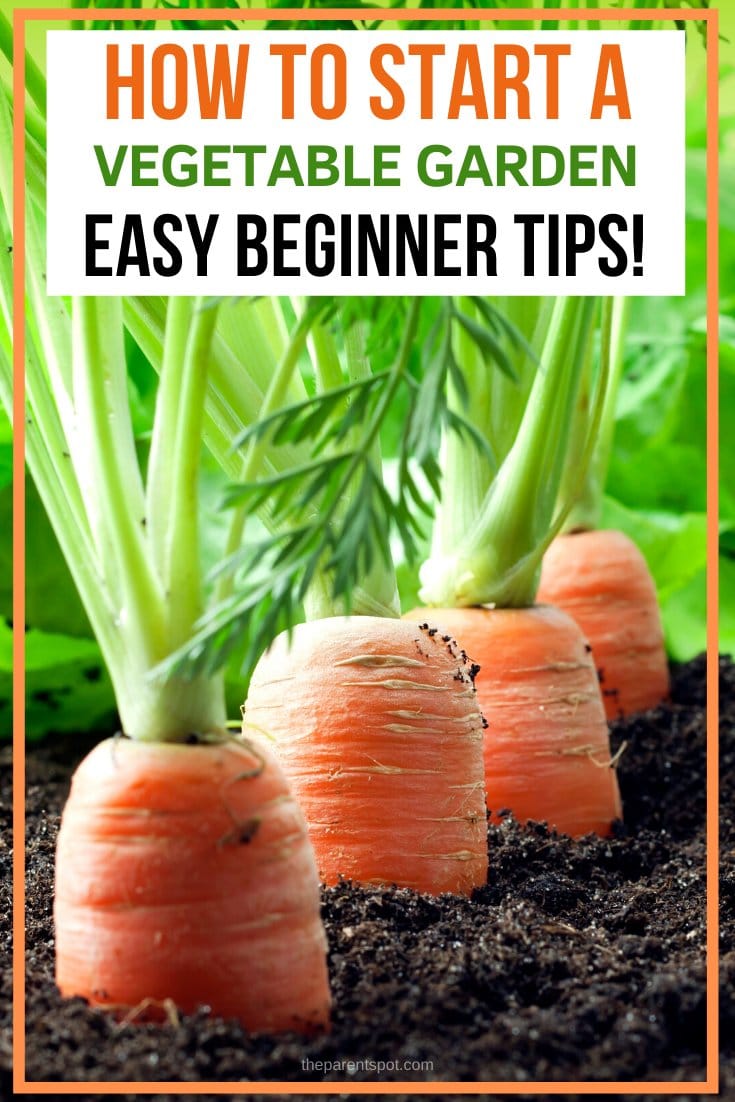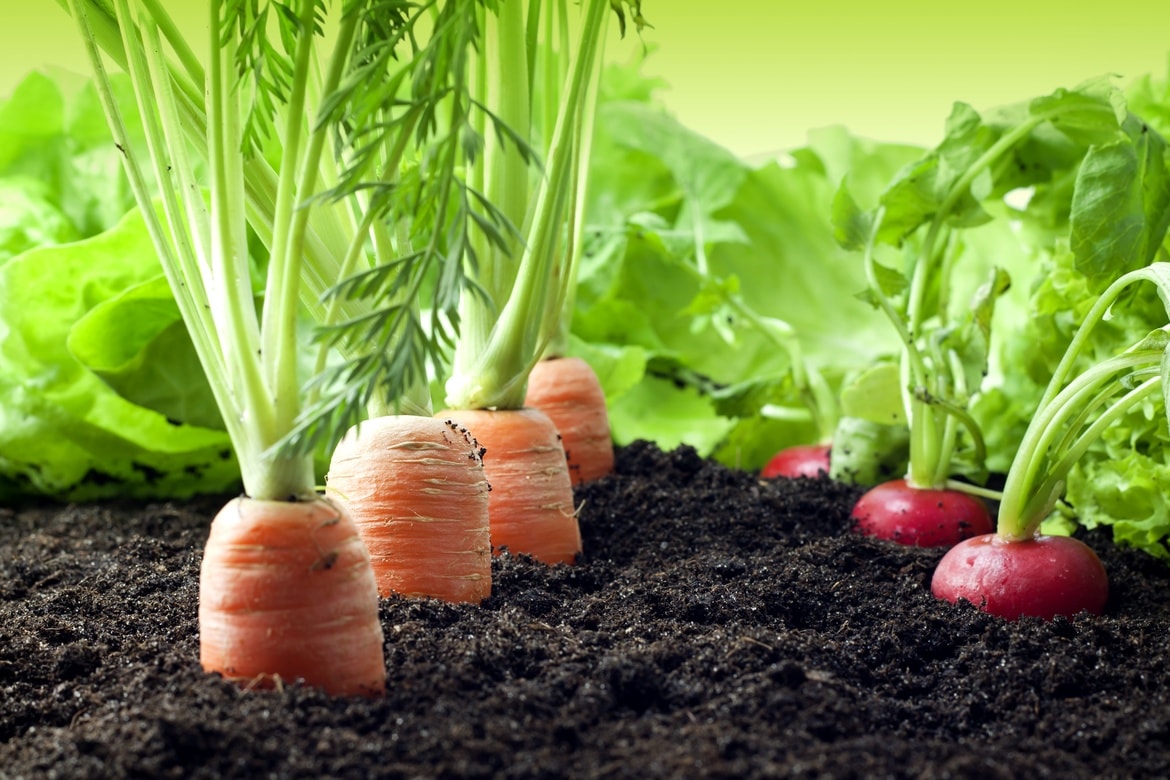
With everything going on in the world right now, a lot of people (me included!) are planting more veggies, or starting a veggie garden for the first time. Luckily, it’s the perfect time for planning a spring vegetable garden, with the sun getting warmer and the days longer.
I started gardening in my Mom’s huge garden on our farm growing up, and there’s rarely been a year I haven’t put in a veggie garden. If you’re eager to start work in the vegetable garden, I wrote this article to help you get better organized, and get better yields from your hard work.
Try not to be overwhelmed! There are a lot of DIY spring gardening tips here, but really all you need for a great veggie garden are seeds, good soil, sun and water! Have fun!
When the time comes to harvest, you’ll be eating fresh veggies from your own garden, and making batches of homemade chunky salsa for canning!
Planning a spring vegetable garden
The key to successful vegetable garden is to plan ahead, so here are 10 vegetable tasks to do this spring.
Order your seeds, fertilizer and mulch
Getting your seeds is especially important right now, since many garden centers are getting backlogged with orders.
If your local nursery is starting to sell out of seeds, check out your local grocery store when you do your regular shopping (many have a rack of seeds near the floral area), or local hardware store’s garden center.
If you have a neighbor or family member who gardeners, ask if they have any seeds they can spare. Many gardeners have extra seeds on hand, and would love to help you out!
If you’re looking on Amazon, this Non GMO Heirloom Vegetable Seed pack is a good place to start. Check availability and shipping to make sure you’ll get them in time, or order them for next year.
See the 16,500 Non GMO Heirloom Vegetable Seeds Survival Garden 40 Variety Pack on Amazon here.
Make sure you get good quality seeds from a reliable company and that you are getting the vegetables appropriate to your USDA plant hardiness zone (see Canadian hardiness zone maps here).
Now is the time to order fertilizers, mulch and other things you may not have on hand for your garden.
Plan ahead
First off, you need to start planning ahead as best you can.
Check all the things you might want to do, sketch out a plan for your garden layout. Inspect the garden, look for what needs to be done and write it down, that way you will be able to organize yourself better.
You don’t need a ton of space to raise a great veggie gardening. Look into techniques like intensive gardening and vertical gardening to maximize the space you have.
I’m starting to incorporate some intensive gardening techniques, like planting carrots in the shade of my tomato plants this year. I’ll let you know how they work!
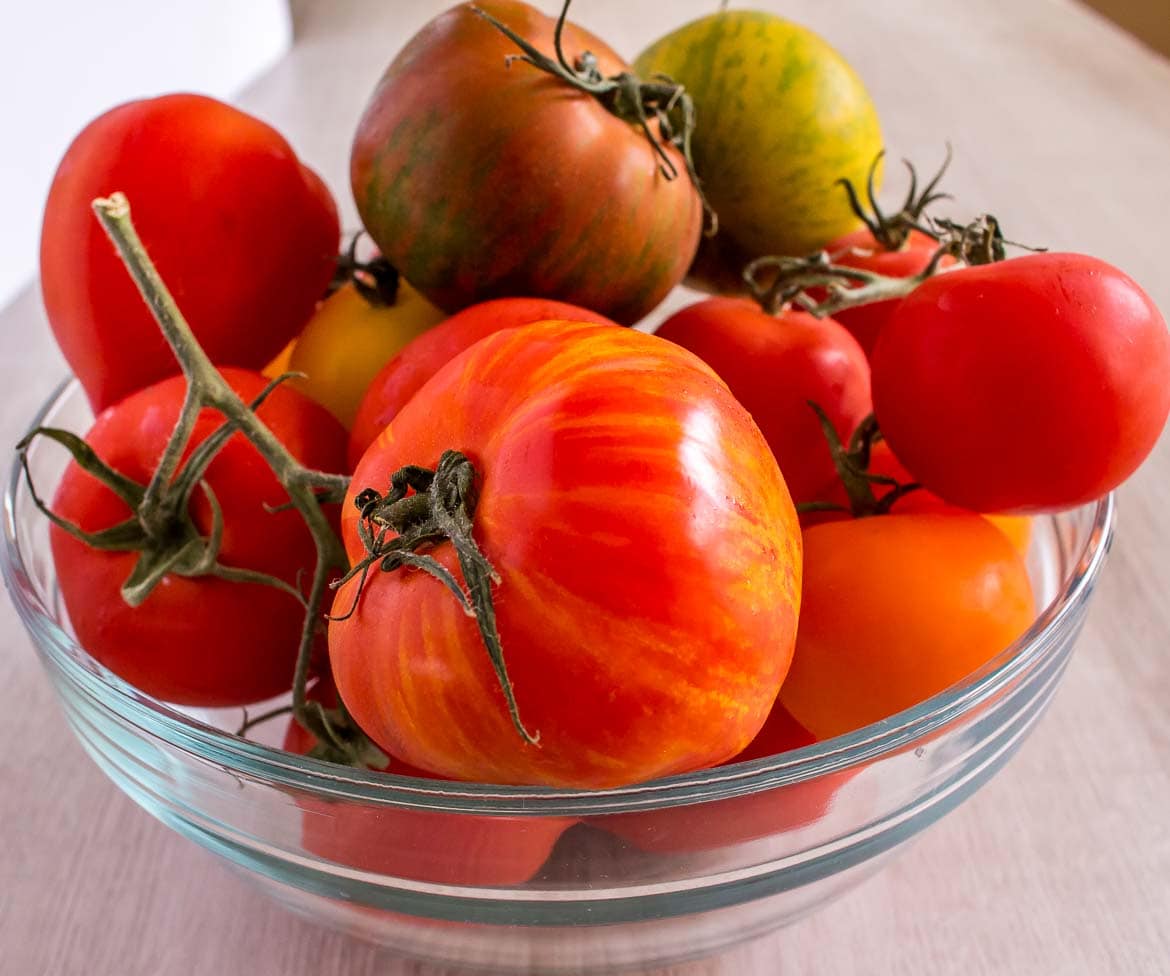
Plan for crop rotation for next year
It is very important to take crop rotation into account. Don’t plant the same vegetables in the same spot as the previous year. Besides avoiding infection from diseases of previous years, you can plants with a soil that hasn’t been depleted in the past years.
Inspect tools and make necessary repairs
Check your tools and accessories, repair the ones that are damaged, sharpen your shovel, fix handles, etc. It is best to do this now, as once the warmer days come, you want to plant and tend to the garden and not perform repairs.
Plan for the watering system
You want to come up with a good watering strategy. Build an irrigation system or inspect the one you already have for damage, plan on how you are going to run the soaker hoses or set up the rain barrel if you intend to use one.
Because we have a good size yard without underground irrigation, we just use regular lawn sprinklers on a timer to water our garden. Sure, it isn’t perfect, but it gets the job done!
Remove rogue seedlings
Even if you may be glad to get some freebies from last year, you want to remove all rogue seedlings that popped up in your garden over the winter, as they might carry diseases that could spread to healthy plants.
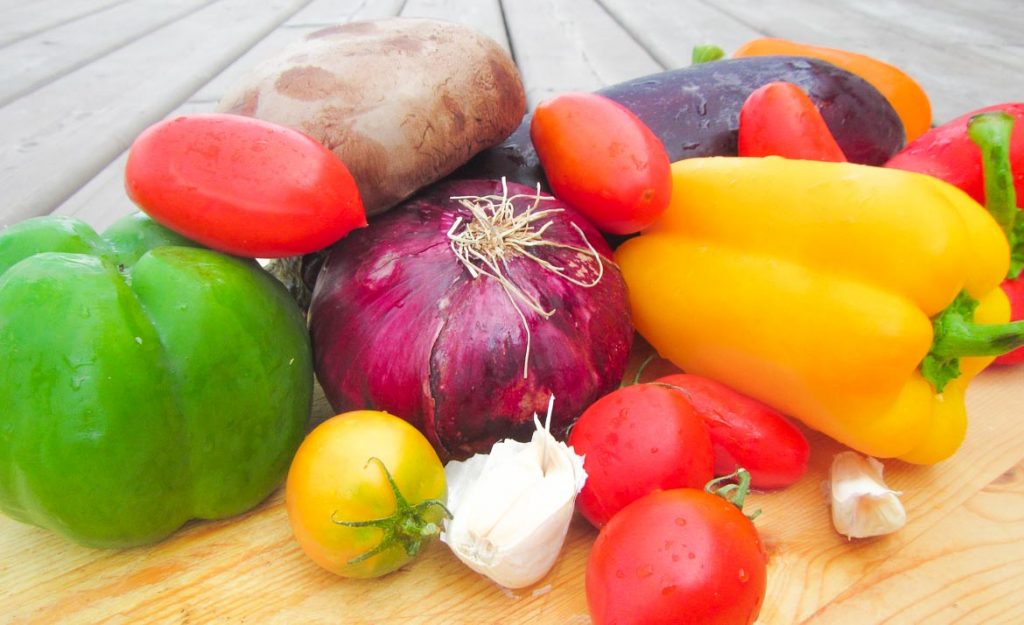
Take preventive measures against pests and diseases
Remove boards and rocks where snails, slugs and other pests might find refuge. Sow plants that deter pests or attract beneficial insects such as marigolds, fennel, dandelions and caraways.
Start the seeds indoors
Now you can start planting the seeds indoors. Use small plastic cups or other recipients, put them near a window where they get plenty of light and water them carefully.
One tip: I have fairly low light inside, so I consistently have problems with my seedlings getting leggy. To keep this from being a problem, I’ve started setting my seedlings outside on my back deck during the day, so they get plenty of light. It’s a bit of a bother, but it results in strong, healthy plants.
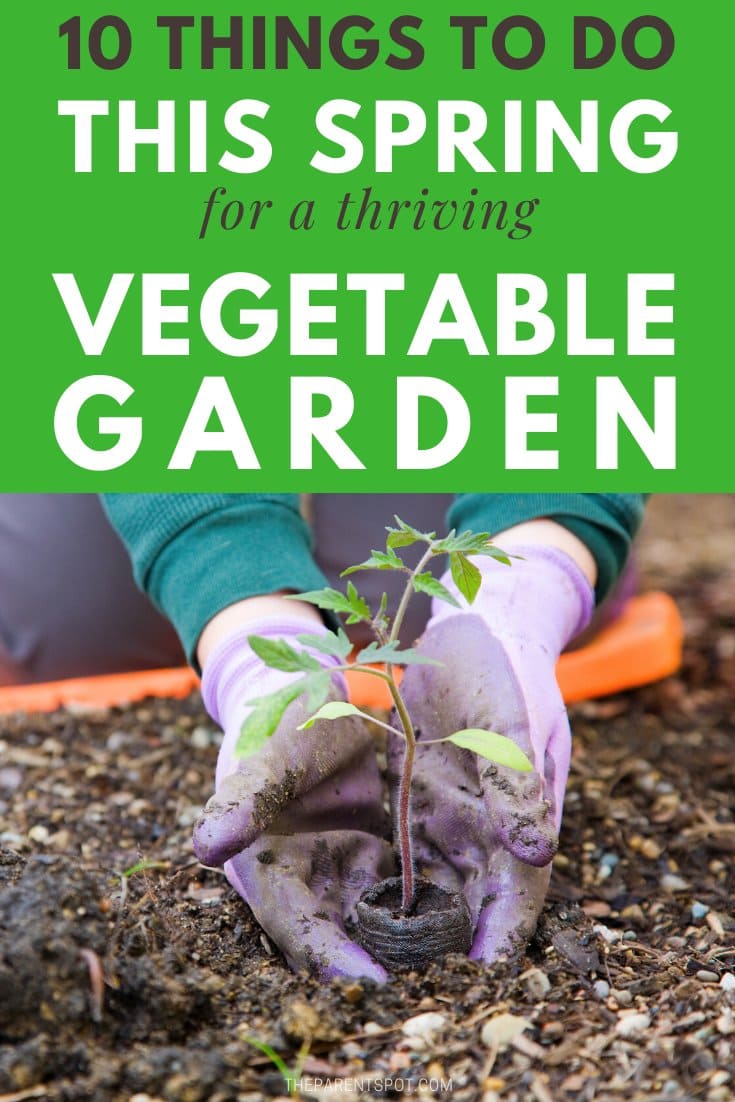
Move seedlings to larger pots
As soon as the seedlings from tomatoes or other plants grow their second pair of leaves, you want to transplant them to larger pots to grow.
Plant when the time is right
Since you have already gotten a head start by planting indoors, you can now transplant the seedlings in the garden. Make sure you move them to the garden soil without disturbing their roots.
Make sure that you plant outdoors only when the danger of frost is over. This is going to vary a lot depending on where you live. Here in the interior of British Columbia, Canada, I like to get my tomatoes in the garden in early May, as soon as there’s no danger of frost, and when the sun is warm and strong enough to ensure they grow well.
The Old Farmer’s Amanac has a helpful planting calendar for the USA and Canada here. Select your region, and it’ll tell you the best times for starting seedlings indoors, and transplanting outdoors for most veggies.
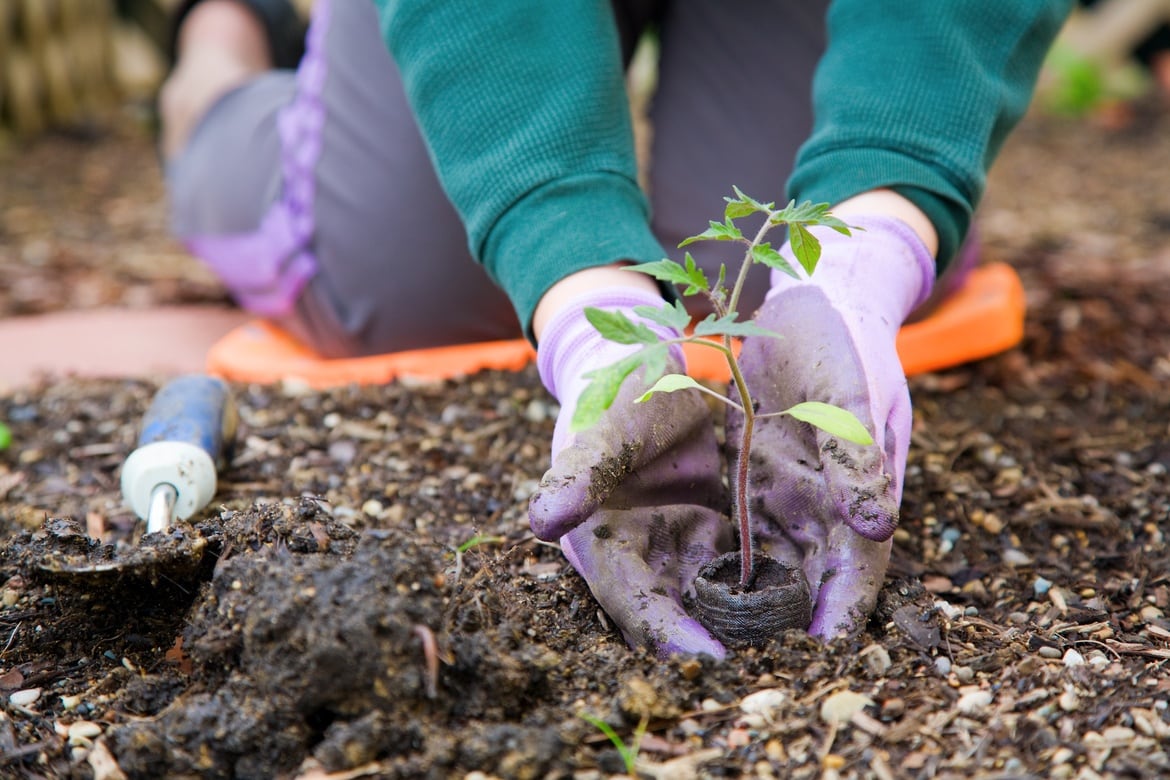
So plan ahead, develop a solid strategy, sow the plants indoors and you will have a great start this spring, with a lovely vegetable garden.
Love gardening? Check out our best perennials for shade and our tips for growing an edible garden for kids or check out our quick landscaping tips.
